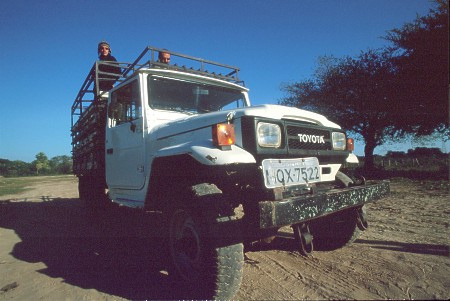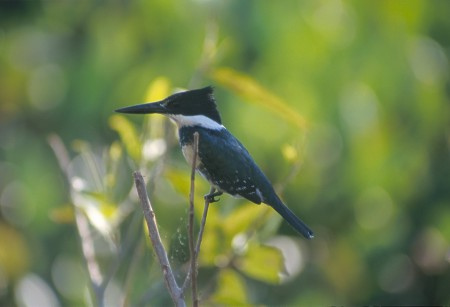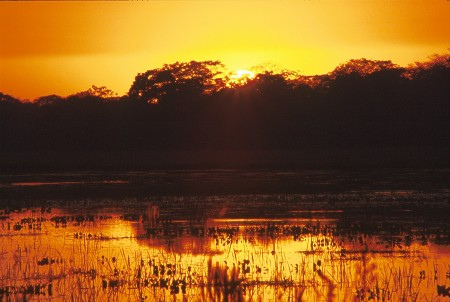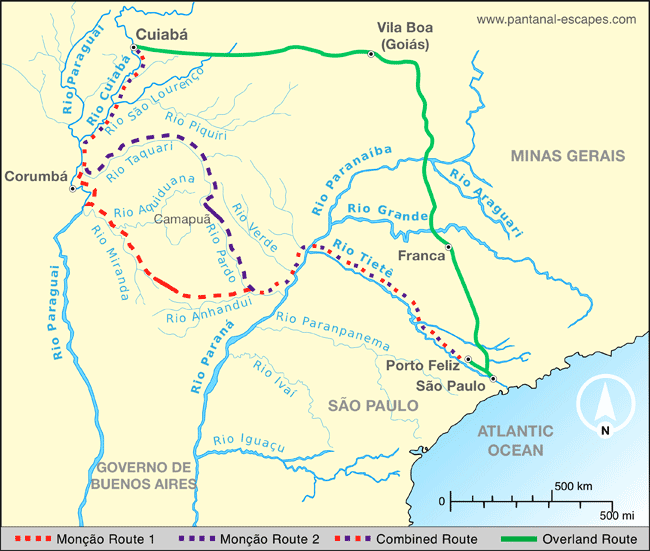History: Great River Expeditions
In the early 18th century, Cuiabá was one of the most remote locations in the Portuguese empire. Journeys from the more populous coastal settlements took around five months overland. These passed through difficult terrain and forests, where there was also high risk of attack from various remaining indian tribes.
In 1719, Pascoal Moreira Cabral made a chance discovery of gold while on a slave hunting expedition. It was the richest gold deposit yet known in Brazil, and Cabral founded Cuiabá to secure the claims for himself and the Portuguese - even though it was on land that technically still belonged to the Spanish.
Gold triggered a sudden influx of miners and new settlers. Rather than the hardy bandeirantes and adventurers of the past, this influx included priests, soldiers, artisans merchants, and administrators arriving with the intention to permanently settle in the new region. The treacherous overland routes were ill-suited for this type of traffic, carrying baggage trains with equipment and supplies.
Rivers were adopted as the new highways into the region. Although the journey still took five months, river transport was more practical for expeditions carrying unseasoned travellers and their goods, and for returning gold extracted from the mines. Canoes and small vessels could make their way upriver, against the current, powered by sails and teams of oarsmen (usually native indian and African slaves).
The river expeditions became known as monções (monsoons), so called because they followed a similar pattern to the monsoons, and associated seasonal reversal of winds, which the early Portuguese navigators relied on for their journeys to and from India. The best season for river travel was the period from March to September when the slow river currents were most conducive - and to avoid the insects and disease which plagued the rivers in the wet season.
The route typically began on the Tietê River, near São Paulo, moving up the Paraná and Pardo rivers until a location called Camapuã Farm where the canoes and other small craft needed to be beached. There was then a 14 km overland trek leading to the Paraguay basin. New canoes were prepared - with transport resuming along the Taquari, Paraguay, and eventually onto the Cuiabá River. There were still rapids and other dangers to contend with, but it was manageable.
Expeditions ran from the 1720s, with regularly scheduled convoys, led by professional guides and river captains. Until the mid 19th century, and the advent of railways and steamships, these were the only practical means of delivering men, supplies and communications needed to sustain the distant colony. Even the region's first cattle were delivered by this route.
The last recorded expedition took place in 1858, transporting arms and ammunition as tensions with Paraguay increased in the period leading up the Paraguayan War (War of Triple Alliance).
Multimedia Links










Image credits: Departure of the Monção (river expedition), Painting by Alameida Júnior.
Photos: Bandeirante, Sunset, and Kingfisher (Andrew Mercer)

Pantanal Escapes